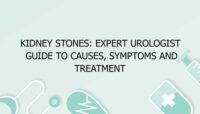Diphtheria in Children: Symptoms, Causes, and Treatment
Diphtheria in children is a serious bacterial infection that primarily affects the throat and respiratory tract. Caused by the bacterium Corynebacterium diphtheriae, diphtheria was once a major cause of illness and death in children before the development and widespread use of vaccines. This article explores the symptoms, causes, and treatment options for diphtheria in children, emphasizing the importance of prevention and timely medical intervention.
Understanding Diphtheria in Children
Diphtheria is an infectious disease that can cause severe complications if not treated promptly. The bacterium Corynebacterium diphtheriae produces a toxin that can lead to the formation of a thick, gray or white membrane in the throat, which can cause difficulty breathing and swallowing. The disease primarily affects the upper respiratory tract but can also involve the skin, heart, and nervous system.
Transmission and Incubation Period
Diphtheria in children spreads through respiratory droplets when an infected person coughs or sneezes. It can also be transmitted by direct contact with contaminated objects or surfaces. The incubation period for diphtheria is typically 2 to 5 days, during which time the bacteria multiply in the throat and produce the toxin that causes symptoms.
Symptoms of Diphtheria in Children
The symptoms of diphtheria in children can vary in severity, and they may develop gradually or suddenly. Key symptoms include:
1. Throat Symptoms:
- Sore Throat: The initial symptom of diphtheria in children is usually a sore throat. The pain may range from mild to severe and can make swallowing difficult.
- Diphtheritic Membrane: One of the hallmark signs of diphtheria is the presence of a thick, gray or white membrane that forms in the throat or on the tonsils. This membrane is composed of dead tissue, bacteria, and immune cells. It can obstruct the airway and lead to breathing difficulties.
- Swollen Lymph Nodes: The lymph nodes in the neck may become swollen and tender, which is a common response to the infection.
2. Systemic Symptoms:
- Fever: A low-grade fever is common in children with diphtheria, but it can sometimes become higher depending on the severity of the infection.
- Malaise and Weakness: Children with diphtheria often experience general malaise, weakness, and fatigue. The systemic effects of the toxin can lead to a feeling of being unwell.
3. Complications:
- Breathing Difficulties: The diphtheritic membrane can cause significant swelling and obstruction of the airway, leading to breathing difficulties. In severe cases, this can progress to respiratory distress or suffocation.
- Cardiac Complications: Diphtheria can affect the heart muscle, leading to myocarditis (inflammation of the heart) and potential heart failure. Symptoms may include chest pain, palpitations, and shortness of breath.
- Neurological Complications: The diphtheria toxin can affect the nervous system, causing peripheral neuropathy (damage to the nerves outside the brain and spinal cord). Symptoms may include weakness, numbness, or difficulty swallowing.
- Skin Diphtheria: In rare cases, diphtheria can present as a skin infection with similar symptoms to the respiratory form, including ulcers and grayish membranes on the skin.
Causes of Diphtheria in Children
Diphtheria in children is caused by the bacterium Corynebacterium diphtheriae. This bacterium is gram-positive and rod-shaped, and it produces an exotoxin that is responsible for the disease’s symptoms and complications. Key factors contributing to the development of diphtheria include:
1. Bacterial Toxin Production:
- Exotoxin Production: Corynebacterium diphtheriae produces a potent exotoxin that damages tissues and disrupts cellular functions. The toxin leads to the formation of the characteristic diphtheritic membrane in the throat and can cause systemic complications affecting the heart and nervous system.
2. Lack of Vaccination:
- Unvaccinated Individuals: The incidence of diphtheria has decreased significantly due to widespread vaccination with the diphtheria-tetanus-pertussis (DTP) vaccine. However, unvaccinated children or those who have not completed the full vaccination series are at higher risk of contracting diphtheria.
3. Poor Hygiene and Overcrowded Living Conditions:
- Transmission Factors: Poor hygiene, overcrowded living conditions, and inadequate sanitation can increase the risk of diphtheria transmission. The disease spreads easily in environments where people are in close contact.
4. Exposure to Infected Individuals:
- Direct Contact: Children who come into contact with individuals who are infected with diphtheria or who are carriers of the bacteria are at risk of contracting the disease.
Diagnosis of Diphtheria in Children
Diagnosing diphtheria in children involves a combination of clinical evaluation and laboratory tests. The diagnostic process includes:
1. Clinical Evaluation:
- Medical History and Physical Examination: A healthcare provider will take a detailed medical history and perform a physical examination, focusing on the symptoms and appearance of the throat. The presence of a grayish membrane in the throat, along with other symptoms, can suggest diphtheria.
2. Laboratory Tests:
- Throat Swab: A throat swab is collected to culture the bacteria and confirm the presence of Corynebacterium diphtheriae. This test helps identify the causative organism and determine antibiotic sensitivity.
- Diphtheria Toxin Test: The presence of the diphtheria toxin can be detected using specialized tests. This can help confirm the diagnosis and assess the severity of the infection.
- Blood Tests: Blood tests may be conducted to assess the overall health of the child, check for signs of systemic involvement, and monitor for complications such as myocarditis.
Treatment of Diphtheria in Children
Treatment of diphtheria in children involves a combination of antibiotics and antitoxin therapy. Early intervention is crucial to prevent complications and reduce the risk of transmission. Key aspects of treatment include:
1. Antitoxin Therapy:
- Diphtheria Antitoxin: The primary treatment for diphtheria is the administration of diphtheria antitoxin. This medication neutralizes the diphtheria toxin and helps prevent further damage. It is usually given as an intravenous infusion and is most effective when administered early in the course of the disease.
2. Antibiotic Therapy:
- Antibiotics: Antibiotics are prescribed to eradicate Corynebacterium diphtheriae from the body and prevent transmission. Commonly used antibiotics include penicillin or erythromycin. The choice of antibiotic may depend on the severity of the infection and the results of sensitivity testing.
3. Supportive Care:
- Symptom Management: Supportive care includes managing symptoms such as fever and pain. Acetaminophen or ibuprofen can be used to reduce fever and alleviate discomfort.
- Airway Management: In cases of severe respiratory obstruction, interventions such as intubation or tracheostomy may be necessary to ensure that the child can breathe adequately.
- Monitoring for Complications: Children with diphtheria should be closely monitored for complications such as myocarditis or peripheral neuropathy. Treatment for these complications may include additional medications or supportive care.
4. Isolation and Infection Control:
- Preventing Transmission: Children with diphtheria should be isolated from others to prevent the spread of the infection. Good hygiene practices, including frequent handwashing and the use of personal protective equipment, can help reduce the risk of transmission.
Prevention of Diphtheria in Children
Preventing diphtheria in children is primarily achieved through vaccination and maintaining good hygiene. Key prevention strategies include:
1. Vaccination:
- Diphtheria-Tetanus-Pertussis (DTP) Vaccine: The diphtheria vaccine is part of the DTP series, which protects against diphtheria, tetanus, and pertussis (whooping cough). The vaccine is administered as a series of shots starting at 2 months of age, with booster doses given at regular intervals. Completing the full vaccination series is essential for effective protection.
- Booster Doses: Booster doses of the diphtheria vaccine are recommended for older children and adults to maintain immunity. This is particularly important for those who may be at higher risk of exposure.
2. Good Hygiene Practices:
- Handwashing: Regular handwashing with soap and water is essential to reduce the risk of spreading infectious diseases, including diphtheria.
- Avoiding Close Contact: Infected individuals should avoid close contact with others, especially in crowded or communal settings, to prevent the spread of the disease.
3. Monitoring and Reporting:
- Surveillance: Monitoring for cases of diphtheria and reporting suspected cases to public health authorities can help identify and control outbreaks. Timely reporting ensures that appropriate measures are taken to prevent further spread.
FAQs
What is diphtheria, and how is it transmitted?
Diphtheria is a bacterial infection caused by Corynebacterium diphtheriae. It is transmitted through respiratory droplets from coughs or sneezes of an infected person, as well as through direct contact with contaminated objects or surfaces. The bacteria produce a toxin that causes symptoms such as a sore throat, a thick gray membrane in the throat, and systemic effects on the heart and nervous system. Diphtheria is highly contagious, and prevention through vaccination is crucial to reducing transmission.
**What are the common symptoms
of diphtheria in children?**
Common symptoms of diphtheria in children include a sore throat, the formation of a thick gray or white membrane in the throat or tonsils, swollen lymph nodes in the neck, and general malaise. Children may also experience fever, weakness, and difficulty swallowing. In severe cases, diphtheria can lead to breathing difficulties due to airway obstruction, as well as complications such as myocarditis (heart inflammation) and peripheral neuropathy (nerve damage).
How is diphtheria in children diagnosed?
Diphtheria in children is diagnosed through a combination of clinical evaluation and laboratory tests. A healthcare provider will assess the child’s symptoms and conduct a physical examination, looking for signs such as a grayish membrane in the throat. Laboratory tests, including throat swabs for bacterial culture and diphtheria toxin tests, are used to confirm the presence of Corynebacterium diphtheriae and its toxin. Blood tests may also be performed to assess the child’s overall health and monitor for complications.
What are the treatment options for diphtheria in children?
Treatment for diphtheria in children includes administering diphtheria antitoxin to neutralize the bacterial toxin and antibiotics to eradicate the bacteria from the body. Antitoxin therapy is most effective when given early in the course of the disease. Antibiotics such as penicillin or erythromycin are prescribed to treat the infection and prevent transmission. Supportive care, including managing symptoms, ensuring adequate airway management, and monitoring for complications, is also important for effective treatment.
How can diphtheria in children be prevented?
Diphtheria in children can be prevented through vaccination with the diphtheria-tetanus-pertussis (DTP) vaccine. The vaccine is administered as a series of shots starting at 2 months of age, with booster doses given at regular intervals. Maintaining good hygiene practices, such as regular handwashing and avoiding close contact with infected individuals, also helps prevent the spread of the disease. Monitoring for cases and reporting them to public health authorities can aid in controlling outbreaks.
Is diphtheria a common disease today?
Diphtheria was once a common and serious disease, but its incidence has significantly decreased due to widespread vaccination. In countries with high vaccination coverage, diphtheria is rare. However, it can still occur in areas with lower vaccination rates or in situations where vaccination programs are not well established. Continued vigilance, vaccination, and prompt treatment are essential to prevent the resurgence of diphtheria.
What are the potential complications of diphtheria in children?
Potential complications of diphtheria in children include respiratory obstruction due to the diphtheritic membrane, myocarditis (inflammation of the heart muscle), and peripheral neuropathy (nerve damage). Severe cases can lead to difficulty breathing, heart failure, and neurological symptoms. Early diagnosis and treatment are crucial to prevent these complications and manage the disease effectively.
Can diphtheria be treated with antibiotics alone?
Antibiotics alone are not sufficient to treat diphtheria, as they do not neutralize the diphtheria toxin produced by Corynebacterium diphtheriae. The primary treatment includes the administration of diphtheria antitoxin to neutralize the toxin and antibiotics to eliminate the bacteria. Both treatments are necessary to address the disease and prevent further damage.
What should be done if a child with diphtheria has difficulty breathing?
If a child with diphtheria has difficulty breathing, immediate medical attention is required. Severe respiratory obstruction may necessitate interventions such as intubation or tracheostomy to secure the airway. Prompt treatment with diphtheria antitoxin and antibiotics, along with supportive care, is essential to manage breathing difficulties and other complications effectively.
When should a child with diphtheria see a healthcare provider?
A child with diphtheria should see a healthcare provider as soon as symptoms are suspected, especially if they include a sore throat, grayish membrane in the throat, or difficulty breathing. Early diagnosis and treatment are crucial to prevent complications and reduce the risk of transmission. If severe symptoms or complications arise, such as respiratory distress, heart symptoms, or neurological issues, seeking prompt medical care is essential for effective management.
In summary, diphtheria in children is a serious bacterial infection that can lead to severe complications if not treated promptly. Understanding the symptoms, causes, and treatment options for diphtheria is crucial for effective management and prevention. Vaccination remains the most effective method for preventing diphtheria, and timely medical intervention is essential for addressing the disease and reducing the risk of complications.


